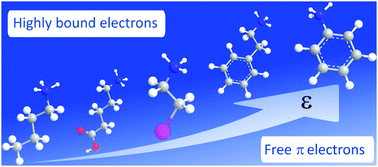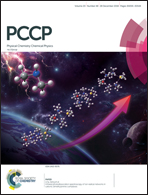Tuning optical/electrical properties of 2D/3D perovskite by the inclusion of aromatic cation†
Abstract
The employment of bulky aliphatic cations in the manufacture of moisture-stable materials has triggered the development and application of 2D/3D perovskites as sensitizers in moisture-stable solar cells. Although it is true that the moisture stability increases, it is also true that the photovoltaic performance of 2D/3D PVK materials is severely limited owing to quantum and dielectric confinement effects. Accordingly, it is necessary the synthesis and deep optical characterization of materials with an adequate management of dielectric contrast between the layers. Here, we demonstrate the successful tuning of dielectric confinement by the inclusion of a conjugated molecule, as a bulky cation, in the fabrication of the 2D/3D PVK material (C6H5NH3)2(CH3NH3)n−1PbnI3n+1, where n = 3 or 5. The absence of excitonic states related to n ≥ 1 at room temperature, as well as the very low concentration of excitons after 1 ps of excitation of samples in which n ≥ 3, provide strong evidence of an excellent ability to dissociate excitons into free charge carriers. As consequence films with low n, presenting higher stability than standard 3D perovskites, improved significantly their performance, showing one of the highest short circuit current density (Jsc ≈ 13.8) obtained to date for perovskite materials within the 2D limit (n < 10).

- This article is part of the themed collection: 2018 PCCP HOT Articles


 Please wait while we load your content...
Please wait while we load your content...